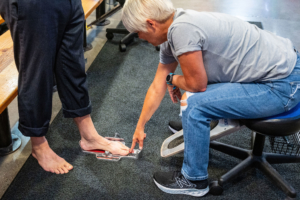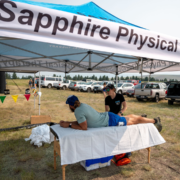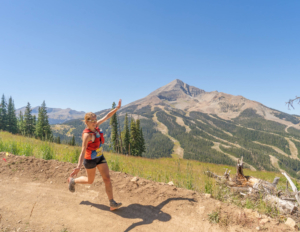Running 101, Part 3: Troubleshooting common injuries
At some point in your running journey, there is a chance you will encounter an injury. Not everyone gets injured, and thankfully most injuries are preventable and short-lived. Below we’ll chat about the most common ones that we see in the store. We are no medical experts, so take our advice with a grain of salt. But thankfully, there are medical experts who are able to help you to a speedy recovery! We work with the physical therapists at Sapphire Physical Therapy to offer free in-store injury consultations twice a month, on the 2nd and 4th Thursday from 5:15-6:00pm. If you have an injury (or a “maybe” injury), drop by to chat with a PT!
No one likes to be injured. Thankfully injuries are often preventable. Here are a few tips to avoid injury:
- Increase mileage gradually to reduce over-use injuries (a general rule of thumb is to increase by no more than 10% each week)
- Take rest days to allow your body to adjust to the training you are doing
- Get plenty of sleep
- Do preventative physical therapy/strength training
- If something starts to hurt, reduce your running to allow it to heal
- Get help from a medical professional early on if you do end up getting injured
Common Injuries
We help a lot of people out at the store with common injuries, pains, and naggles. Below are some of the injuries we hear about most, and what we typically recommend:
Blisters
Yes, blisters are an injury! They can be very painful and prevent us from doing the things we love. Luckily, there are easy ways to prevent blisters. First step, try a non-cotton sock. Cotton traps moisture (your foot sweat, ew!) and creates more friction within your shoe. A non-cotton (i.e. wool or synthetic) sock will wick that moisture away to keep your foot dry and happy. If new socks don’t make the blisters go away, try BodyGlide, Squirrel’s Nut Butter, or another skin lubricant. Finally, consider the fit of your shoes. You should have no slipping in your heels and plenty of room in the toes. If you can feel your toes hitting or rubbing the front, your shoes are too small! If your heel slips up with every step, your shoes are likely too big.
General foot pain
Similar to blisters, general foot pain can arise from an improperly fitting shoe. You might not be able to pinpoint this discomfort, but you know that it sure isn’t comfortable. Getting the correct footwear, and an insert if necessary, will go a long way towards making your feet happy. Different feet prefer different things. While it’s nice to take a friend’s recommendation for shoes, your unique feet should be the ultimate decider! Drop by the store and try on a bunch of shoes. Chat with our team and we’ll walk you through what the best options are to match your foot type. If your pain seems more related to a specific injury, we strongly recommend seeing a physical therapist or other medical professional. But new shoes are a great place to start!
Pain in the knees
There are a ton of causes of knee pain! Sometimes the fix is as simple as using a more cushioned pair of shoes. A lot of customers with “old knees” appreciate the high cushion shoes available today. Knee pain also frequently develops from overuse or increasing mileage too quickly. Other times, there are muscle imbalances that put a large amount of pressure on the knees. If dialing back mileage or trying cushioned shoes doesn’t work, consider seeing a PT.
Arch pain

A properly fitting shoe can go a long way in helping your feet and body stay happy. Photo: Anastasia Wilde
Arch pain can be caused by a lot of different things, but oftentimes we see folks that need a more supportive shoe or insert. A “supportive shoe” can have a variety of meanings. In this case, often a “stability shoe” can help support the arch more. A stability shoe is stiffer, more rigid, and has denser foam or “guiderails” to support the arch. Your foot moves less in a stability shoe (it is stabilized), which can help people with arch or other foot discomfort. If you don’t want to try an entirely new shoe, you can also use a stabilizing insert or orthotic.
Pain under your heels
Sometimes this pain is brought on by the dreaded plantar fasciitis. People love to self-diagnose this, but it is always best to see a physical therapist or podiatrist for help. If you have pain under your heels, try a stiffer shoe, a supportive insert, or more cushion. If that doesn’t help, chat with a PT or podiatrist for the best way to address your pain. We have a number of solutions in store that can work with what your medical provider suggests.






